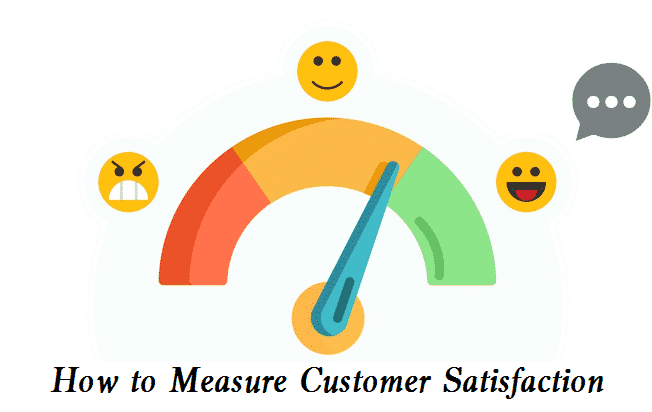How to better meet the needs of customers is the key to the success of companies. Satisfied customers prefer to maintain a long-term relationship with suppliers, and a long-term customer has great economic value. This article introduces six common measurement methods (tools) of customer experience.

How to Measure Customer Satisfaction – 6 Customer Satisfaction Measurement Tools
1. Net Promoter Score (NPS)
Net Promoter Score (NPS) was first proposed in 2003. It is an index used to measure customers’ willingness to recommend an enterprise’s products or services to others. The calculation formula is: NPS = (number of recommenders/total number of samples) X100% – (number of detractors/total number of samples) X100%
Its core idea is that the customer base of each company can be divided into three categories, and each category has its own unique behavior mode:
- Recommender: big fans. They not only patronize repeatedly but also urge their friends to do the same.
- Passive: satisfied but not enthusiastic customers can be easily won over by competitors.
- Detractors: dissatisfied customers who are trapped in a bad relationship for some reason. For example, if a brand wants to know whether customers are satisfied, it can set NPS question in the questionnaire – “how likely are you to recommend our products to friends or colleagues? Please score from 0-10”.
In short, NPS is a necessary standard to measure whether products and services can really be recognized by users: recommenders will continue to buy and recommend to others, and re-purchase and recommendation will accelerate your growth; Detractors can destroy your brand reputation, and negative reputation will prevent your growth. Therefore, NPS can better reflect the user’s behavior and use it to predict repeated purchases and new consumption in the future, which is more accurate.
2. Customer Satisfaction Score (CSAT)
Customer Satisfaction Score is an indicator used to measure customer satisfaction with business, purchase, or interaction. It is also one of the most direct methods to measure customer satisfaction. It can be obtained through a simple question, such as “how satisfied are you with your experience?”
Users are required to evaluate their satisfaction with specific events/experiences. Generally, a five-point scale is used, including very satisfied, satisfied, average, dissatisfied, and very dissatisfied. The CSAT value is obtained by calculating the proportion of users with 4 and 5 points: CSAT = (number of satisfied customers/total sample number)X100% (number of satisfied customers refers to the total number of users with 4 and 5 points). The advantage of CSAT is simple and scalable. However, in recent two years, in terms of comprehensive management effectiveness and management granularity, NPS has gradually replaced cast as the measurement index of customer experience.
3. Customer Attrition Rate
Customer Attrition Rate/Churn Rate is the ratio of the number of customers lost to the number of customers of all consumer products or services. It is the quantitative expression of customer churn, the main index to judge customer churn, and directly reflects the current situation of enterprise operation and management. Customer churn rate can be divided into absolute customer churn rate and relative customer churn rate. The calculation methods are as follows:
Absolute customer churn rate: (number of customers lost/total number of customers)×100%
Relative customer churn rate: [(number of customers lost/total number of customers) × [relative purchase amount of lost customers]×100%
4. Customer Retention Rate (CRR)
Customer retention rate refers to the proportion that an enterprise continues to maintain its trading relationship with old customers, which can also be understood as customer loyalty. The ability of an enterprise to retain old customers is the key for an enterprise to maintain market share. In fact, retaining old customers is much easier and cheaper than developing new customers.
The calculation formula is: CRR = ((E-N)/S)) x 100%
S: Customers at the beginning of the time period
E: Customers at the end of the time period
N: New customers acquired during this time period
5. Customer Effort Score (CES)
The concept of customer effort score (CES) was put forward in Harvard Business Review in 2010. It can be understood as allowing users to evaluate the difficulty of using a product/service to solve problems. This index measures the effort that consumers have to make to meet their needs through the products of the enterprise. Measuring CES requires only one simple question: “how hard do you need to solve the problem?”, The 5-point system can also be used.
Later, it gradually evolved into a 7-point system to express the degree of agreement with a certain expression, such as 1 = strongly disagree, 2 = disagree, 3 = slightly disagree, 4 = neutral, 5 = slightly agree, 6 = agree, 7 = strongly agree. The basic concept of CES is to let customers feel a good experience, and the core is to reduce trouble and provide convenience for customers. American Marketing scientist Schultz proposed the element of “convenience” in the 4C of integrated marketing, and CES strengthened the importance of “convenience”.
6. Customer Lifetime Value (CLV)
Customer lifetime value is the sum of current and expected benefits brought to the enterprise by consumers in a complete life cycle, that is, in each stage of customer acquisition, promotion, maturity, decline, and loss. CLV is an effective forecast of customers’ future profits, which is used to measure the value of a customer to the enterprise in a period of time. However, CLV is not a single-dimensional vector, but a three-dimensional concept of three-dimensional structure:
Customer retention time dimension: enterprises establish high customer retention rates by maintaining a long-term relationship with customers in order to obtain high customer career value;
Customer share dimension: refers to the percentage of products or services provided by an enterprise in the total consumption expenditure of a customer;
Customer range dimension: the career value of total customers is directly related to customer range.
Inspection services at Ipqcco.com can help you improve product quality, ensure product safety and gain better customer satisfaction.